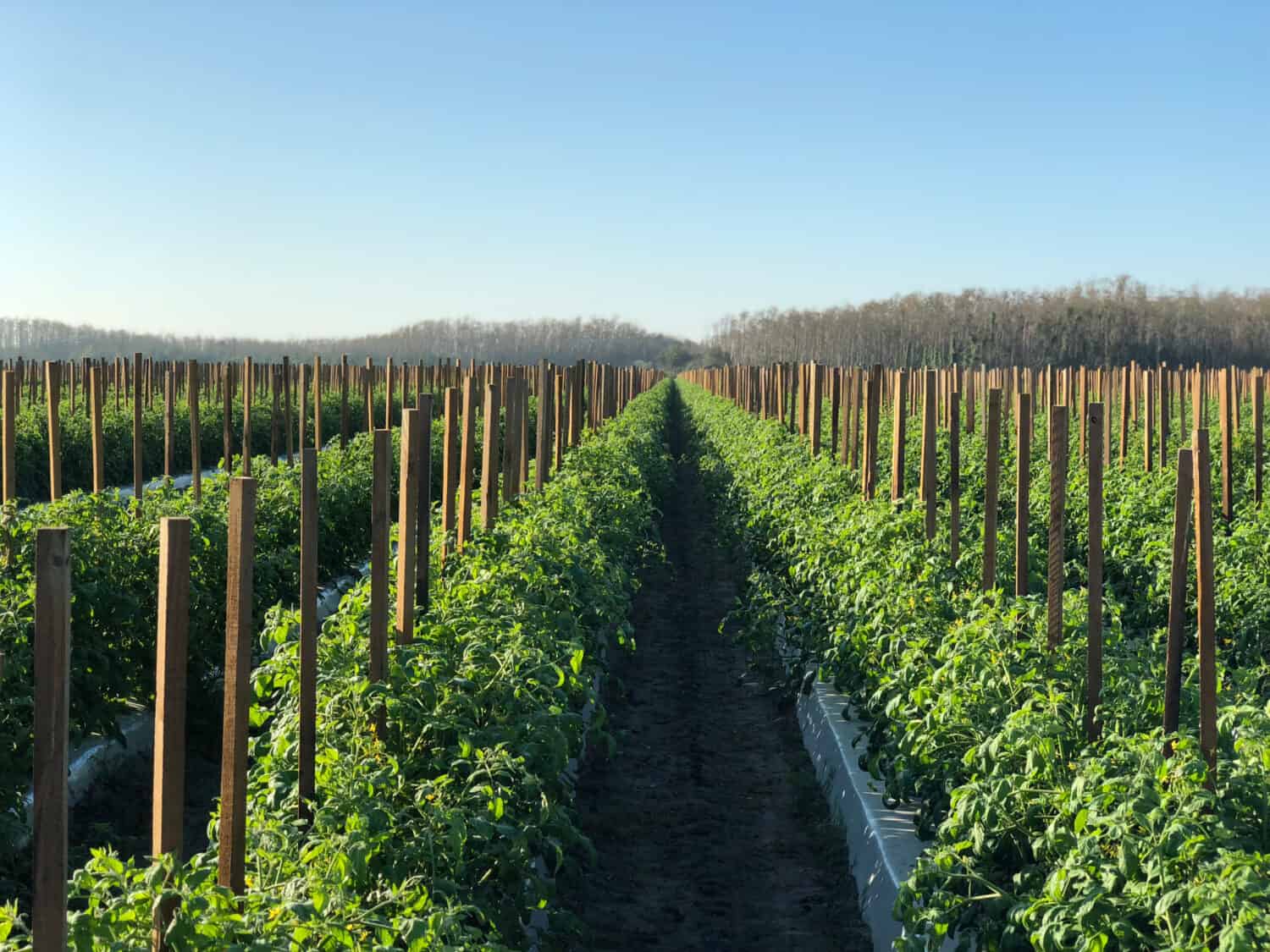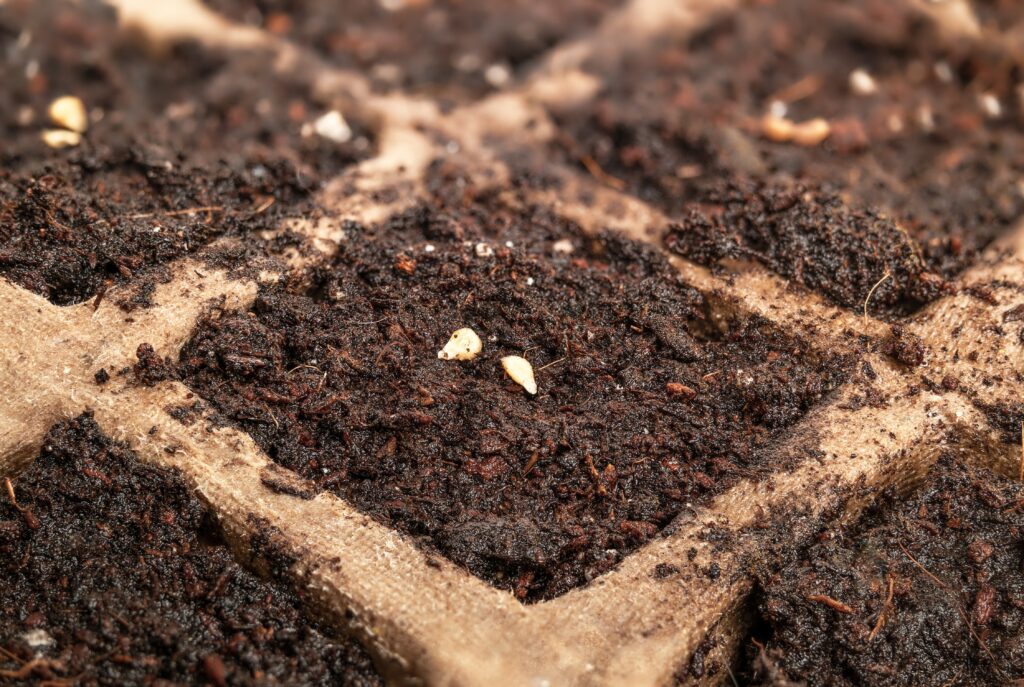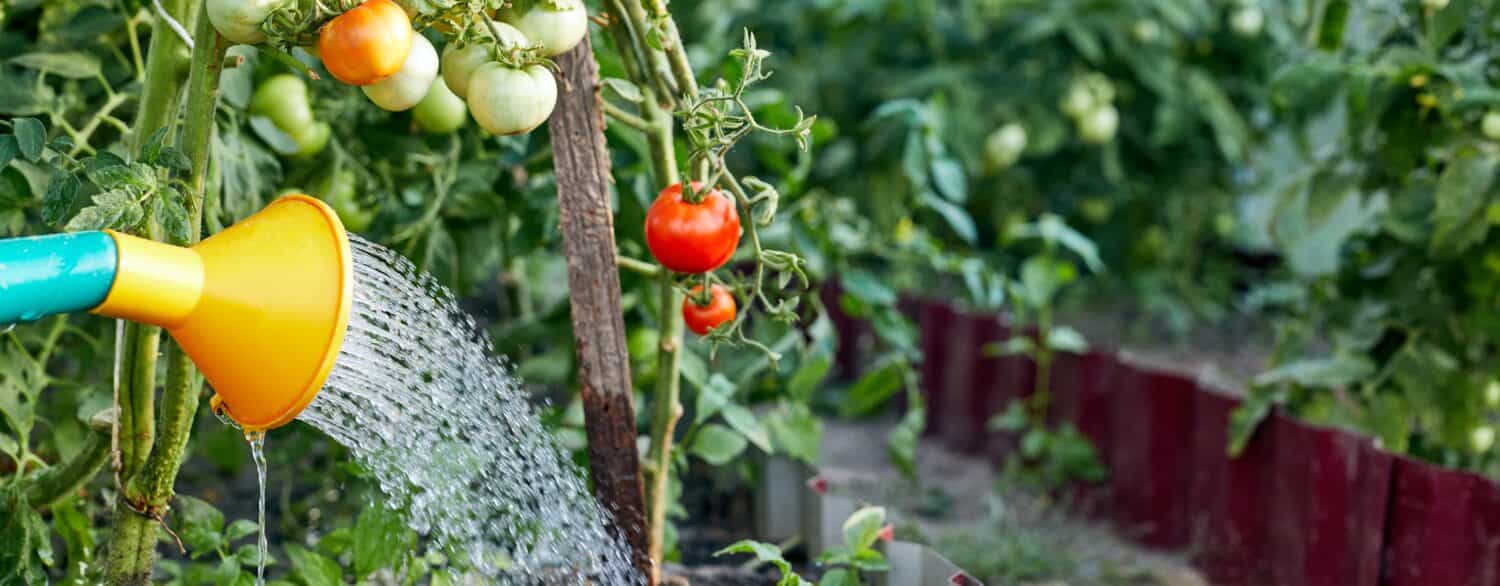To have a thriving tomato garden in Florida, it’s essential to select the appropriate type of tomato for the region’s varied weather conditions and ample sunlight and understand the optimal timing and technique for planting.
Here are essential tips to help you with your mission to grow tomatoes in Florida.
Climate Zones in Florida and Tomato Planting
The ideal planting times for tomatoes in Florida vary based on the different climate zones. In the north, early March is the best time to plant tomatoes. In the central region, February to March or September to November are the optimal periods. Those in the southern region should plant tomatoes between August and February. With the right conditions, tomatoes can be grown all year round in Florida. You may need to move the plants indoors during the cold months. If you move them indoors, make sure you provide adequate light.

The first frost in Florida is usually around late November and lasts until late December.
©Matthew Dicker/Shutterstock.com
Frost Dates and Growing Season in Florida
To plan your tomato garden properly, it’s vital to consider the frost dates in Florida. The last frost typically happens in late February to early March, and the first frost occurs in late November to the end of December in Northern Florida. Central Florida usually sees its last frost in mid-February and its first frost in early December. Frost is uncommon in Southern Florida.
If you are planning to grow vegetables in Florida, it is important to understand the frost dates to determine when to plant and harvest your crops. The frost dates determine the duration of the growing season in each area. The north and central regions have two growing seasons – spring and fall. On the other hand, in the southern region, you can grow tomatoes almost all year long. Knowing when temperatures drop below 32°F (0°C) will help plants survive and thrive.
It is also essential to check local forecasts for potential frosts or freezes throughout the season and to take precautions to protect your plants if a frost or freeze is predicted. Covering your tomatoes with blankets or tarps will help keep them safe until the weather warms up again.

Cherry tomatoes are perfect if you want a more petite tomato.
©Graham Corney/Shutterstock.com
Choosing the Right Tomato Variety
When planting a garden in Florida, selecting an appropriate tomato variety is crucial for its success. Consider the tomato’s size, flavor, and disease resistance when deciding. Given the state’s hot and humid climate, tomatoes are susceptible to illnesses such as late blight and fusarium wilt. So, choosing a disease-resistant variant is critical.
Recommended Tomato Varieties for Florida
To find tomato varieties that are resistant to diseases and can tolerate heat, check out Florida 91, Tropic, and Solar Set. If you like more petite tomatoes, go for cherry and grape tomatoes. You may want to try heirloom varieties such as Cherokee Purple and Brandywine for a strong flavor.
You can also try growing tomatoes in your garden with varieties bred explicitly for Florida. These include Heatwave, Solar Fire, and Sunmaster. They have a high resistance to diseases and can endure the high temperatures of Florida’s summers.

When starting your soil for tomatoes, ideal pH levels should be 6.0 to 6.8.
©sophiecat/Shutterstock.com
Preparing the Soil for Planting Tomatoes
For optimal tomato growth, it’s essential to start with well-prepared soil with a pH level of 6.0 to 6.8, which is slightly acidic. Test your soil and adjust the pH level using lime or sulfur.
To improve your tomato plants, it’s essential to use organic matter such as compost or well-rotted manure to improve soil fertility and structure. Also, ensure your soil has proper drainage to avoid waterlogging, which can harm the plants.
If you’re planting in a raised bed, consider using a soilless mix such as perlite and vermiculite to improve drainage. This will help avoid water pooling around the plant’s roots, which can lead to root rot or other problems.
Planting Tomatoes in Florida Properly
For tomato planting, burying them deeply in the soil while keeping just the top few leaves above the surface is recommended. Doing this will help in promoting stronger plant growth with deep roots. Also, cover the stem and lower branches up to the first set of leaves with soil.
It’s crucial to plant different vegetables at the appropriate depths. For root crops like carrots and turnips, plant the seedlings at least two inches deep; for peas and beans, plant them three inches deep; and for salad greens, plant them one inch deep. If planted too shallow, the young plants may be exposed to cold or dry winds and suffer from root rot or other issues.
To optimize your yields, ensure that you space your plants correctly. If you leave too much room, you may have sparse yields. Similarly, if you plant them too close to each other, each plant may not receive sufficient sunlight and nutrients. You can refer to the recommended spacing instructions on the seed packet to space your plants appropriately.
You should also support vining vegetables such as cucumbers and pole beans. Cucumbers need a trellis or fence to climb, while pole beans require stakes and a netting system to grow properly.

It’s essential to allow the soil to dry completely before watering again.
©wertinio/Shutterstock.com
Caring for Tomato Plants Throughout the Growing Season
Regularly taking care of your plants is crucial for a thriving tomato garden. Deeply water them at intervals with sufficient gaps in between and allow the soil to dry before the next watering. Apply a balanced tomato fertilizer once every 4-6 weeks and frequently trim your plants to encourage better air circulation and light penetration. This will also help to prevent diseases from taking hold.
Additionally, be sure to remove diseased leaves regularly and stems as soon as you identify them. Prune off any suckers that grow in the junction of two branches. This will ensure that your tomato plants are healthy throughout the season.
If you notice any signs of pests or disease, immediately apply an appropriate organic pesticide. Keep your garden clean and free of debris to reduce the risk of these problems occurring in the first place.

Pruning tomatoes improves air circulation and reduces the risk of disease.
©New Africa/Shutterstock.com
Maximizing Tomato Growth and Productivity
The true mark of a successful garden lies not only in the health of the plants but also in their productivity. When it comes to tomatoes, a few essential practices can make a significant difference in your yield.
Pruning for Increased Productivity
Pruning is an essential technique for boosting your tomato yield. This process involves selectively removing parts of the plant that are not directly contributing to fruit production. The goal is to direct the plant’s energy toward growing tomatoes rather than unnecessary foliage.
When pruning your tomato plants, focus on eliminating suckers—the small shoots between the stem and a branch. These suckers rarely produce fruit but can take energy away from the rest of the plant. Regular pruning also improves air circulation around your plants, reducing disease risk.
Staking for Support and Health
Staking is another critical practice for maximizing tomato productivity. Tomato plants, especially the larger indeterminate varieties, can become quite heavy as they grow and begin to bear fruit. Without proper support, the stems can break, damaging the plant and reducing your yield.
By staking your plants, you provide the necessary support to keep them upright. Additionally, staking keeps the fruit off the ground, reducing the risk of rot and disease transmission from the soil. Place the stakes or cages at the planting time for best results to avoid damaging the roots later. As the plant grows, gently tie the stems to the stakes, adjusting the ties as needed.
Conclusion
Growing tomatoes in Florida can be a rewarding experience with the right knowledge and techniques in place. Understanding the unique climate conditions and selecting appropriate tomato varieties is crucial to your gardening success. Proper soil preparation, correct planting techniques, and consistent care throughout the growing season will ensure your tomato plants thrive. Pruning and staking techniques are also beneficial to maximize growth and productivity. Remember, every garden is a learning experience, and with each season, you will gain more insights into what works best for your Florida tomato garden.
The photo featured at the top of this post is © iStock.com/Zbynek Pospisil
Thank you for reading! Have some feedback for us? Contact the AZ Animals editorial team.







